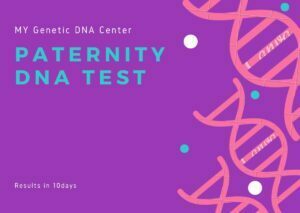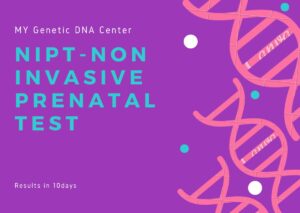LEIGH SYNDROME MITOCHONDRIAL MUTATION DETECTION:
What is Leigh Syndrome Mitochondrial Mutation Detection, and why do doctors recommend it?
Leigh Syndrome Mitochondrial Mutation Detection identifies specific mutations in mitochondrial DNA that cause Leigh Syndrome, a rare and severe neurometabolic disorder affecting infants and young children. Doctors recommend this test when patients exhibit symptoms such as developmental delay, muscle weakness, respiratory problems, and neurological deterioration, which raise suspicion of mitochondrial dysfunction. By detecting mutations in key mitochondrial genes involved in energy production, doctors can confirm a diagnosis, differentiate Leigh Syndrome from other metabolic or neurological disorders, and provide accurate genetic counseling. The test helps clinicians understand the underlying cause of symptoms, assess the risk of disease progression, and guide personalized treatment and supportive care plans to improve patient quality of life.
How does mitochondrial mutation contribute to the development of Leigh Syndrome?
Mitochondrial mutations contribute to Leigh Syndrome by disrupting the normal function of the mitochondrial respiratory chain, which produces energy in the form of ATP necessary for cellular processes. Mutations in mitochondrial genes such as MT-ATP6, MT-ND3, or nuclear-encoded mitochondrial genes lead to defective complexes in the electron transport chain, resulting in insufficient energy production. This energy deficit particularly affects high-demand tissues like the brain, muscles, and nervous system, causing the progressive degeneration seen in Leigh Syndrome. As cells fail to produce adequate energy, affected individuals experience neurological decline, lactic acidosis, and failure to thrive. Detecting these mutations helps doctors understand the exact biochemical defect, enabling targeted management strategies.
Can Leigh Syndrome Mitochondrial Mutation Detection identify asymptomatic carriers?
Yes, Leigh Syndrome Mitochondrial Mutation Detection can identify asymptomatic carriers, especially in cases of maternal inheritance. Since mitochondria pass from mother to child, family members of affected patients may carry mutations without showing symptoms. Identifying carriers allows doctors to offer genetic counseling and preventive advice, particularly regarding family planning. Carriers learn about the potential risk of passing mutations to offspring and can make informed decisions, including undergoing prenatal testing. Detecting carriers plays a crucial role in early intervention and helps families understand the inheritance pattern, significantly reducing uncertainty and anxiety about the disease.
How does Leigh Syndrome Mitochondrial Mutation Detection affect treatment plans?
Leigh Syndrome Mitochondrial Mutation Detection provides doctors with precise genetic information that shapes treatment plans. Although no cure exists, the test helps doctors develop a personalized management strategy focused on slowing disease progression and improving patient quality of life. Physicians recommend mitochondrial cocktails, including coenzyme Q10, thiamine, and L-carnitine, to support mitochondrial function. The test helps avoid unnecessary treatments by confirming the diagnosis and targeting therapy specifically at mitochondrial dysfunction. Regular follow-up and symptomatic management, such as respiratory support or physical therapy, align with the patient’s mutation profile and disease stage, offering tailored medical support that improves overall care.
Is the test useful for prenatal diagnosis of Leigh Syndrome?
Yes, Leigh Syndrome Mitochondrial Mutation Detection plays an important role in prenatal diagnosis, particularly for families with a known history of the disease. Doctors perform the test on chorionic villus samples or amniotic fluid to detect mitochondrial mutations in the fetus. By identifying pathogenic mutations early, families gain crucial information about the risk of the child developing Leigh Syndrome. Prenatal detection allows parents and healthcare providers to plan appropriate interventions, prepare for potential medical challenges after birth, and make informed decisions regarding pregnancy continuation or further genetic counseling. The test helps reduce uncertainty and supports proactive family planning.
How do doctors differentiate Leigh Syndrome from other metabolic disorders using this test?
Doctors differentiate Leigh Syndrome from other metabolic disorders by combining clinical evaluation with mitochondrial mutation detection results. Leigh Syndrome shares symptoms with other neurometabolic diseases, such as mitochondrial myopathy or pyruvate dehydrogenase deficiency. However, specific mutations in mitochondrial DNA or nuclear genes involved in mitochondrial function distinguish Leigh Syndrome. Molecular testing confirms the presence of pathogenic mutations unique to Leigh Syndrome, enabling doctors to rule out other disorders with overlapping symptoms. This targeted approach prevents misdiagnosis, avoids unnecessary treatments, and provides a clear path toward effective disease management.
Can environmental factors influence the expression of Leigh Syndrome mutations?
Environmental factors influence the expression and progression of Leigh Syndrome mutations by increasing metabolic stress on mitochondria. Infections, fever, certain medications, or excessive physical exertion may accelerate energy depletion in already compromised cells, worsening neurological symptoms. Although the presence of a mutation defines genetic risk, environmental triggers often determine when and how severely symptoms manifest. Doctors advise patients and families to avoid known triggers, manage infections promptly, and maintain a balanced lifestyle to minimize additional stress on mitochondria. Early mutation detection helps patients understand how environmental factors can impact disease progression and supports proactive management strategies.
What is the role of heteroplasmy in Leigh Syndrome mutation detection?
Heteroplasmy refers to the coexistence of both mutated and normal mitochondrial DNA within a cell, and it plays a crucial role in Leigh Syndrome mutation detection. The proportion of mutated mitochondria determines the severity and onset of disease symptoms. Higher heteroplasmy levels generally result in earlier and more severe symptom expression. Molecular techniques in mutation detection can quantify heteroplasmy levels, allowing doctors to assess the mutation load and estimate disease risk. This information helps clinicians predict clinical outcomes, guide monitoring frequency, and personalize patient management by focusing efforts on those at higher risk of early disease manifestation.
How accurate is Leigh Syndrome Mitochondrial Mutation Detection?
Leigh Syndrome Mitochondrial Mutation Detection achieves high accuracy due to advanced molecular techniques such as PCR amplification, DNA sequencing, and next-generation sequencing (NGS). These methods detect both common and rare pathogenic mitochondrial mutations, even at low heteroplasmy levels. Laboratories apply stringent quality control protocols to ensure precise identification of mutations. Doctors interpret test results alongside clinical assessments and family history, ensuring comprehensive diagnosis and minimizing false positives or negatives. This high level of accuracy enables early intervention, reduces misdiagnosis, and provides reliable genetic counseling, improving patient outcomes significantly.
Can this test detect nuclear gene mutations causing Leigh Syndrome?
Yes, Leigh Syndrome Mitochondrial Mutation Detection can include analysis of nuclear gene mutations in addition to mitochondrial DNA mutations. Although the condition most commonly results from mitochondrial DNA defects, certain nuclear gene mutations such as SURF1, NDUFS1, and NDUFV1 can also cause Leigh Syndrome by impairing mitochondrial function. Advanced genetic panels allow laboratories to examine both mitochondrial and nuclear DNA simultaneously, providing a more comprehensive assessment of the patient’s genetic status. Detecting nuclear mutations helps doctors identify autosomal recessive inheritance patterns and offer appropriate family counseling, broadening the diagnostic scope and improving clinical management.
Benefits of LEIGH Syndrome Mitochondrial Mutation Detection:
Enables early and accurate diagnosis of Leigh Syndrome by detecting specific mitochondrial and nuclear DNA mutations.
Differentiates Leigh Syndrome from other metabolic and neurological disorders, reducing diagnostic uncertainty.
Supports personalized treatment plans, including mitochondrial-targeted therapy and symptom management.
Guides clinicians in recommending lifestyle changes to reduce metabolic stress and slow disease progression.
Facilitates genetic counseling by providing clear inheritance patterns and carrier status for at-risk family members.
Empowers families to make informed reproductive decisions, including prenatal testing or preimplantation genetic diagnosis.
Limitations of LEIGH Syndrome Mitochondrial Mutation Detection:
Cannot predict the exact age of symptom onset or the severity of disease progression.
May not detect rare or novel mutations if they fall outside standard testing panels.
Low heteroplasmy levels can complicate result interpretation and may require repeat testing.
The test does not offer a cure or directly improve vision or neurological function.
Requires complementary clinical evaluation, metabolic testing, and imaging to form a full diagnosis.
May have limited accessibility due to high cost or unavailability in some healthcare settings.
Some results remain inconclusive, especially in early-stage carriers without clear symptoms.
How does early detection of Leigh Syndrome mutations impact patient outcomes?
Early detection of Leigh Syndrome mutations significantly improves patient outcomes by enabling proactive disease management and preventive care. When doctors identify mutations before severe symptoms develop, they can closely monitor the patient’s neurological status and metabolic function, implement supportive treatments, and avoid environmental triggers that worsen the disease. Early detection allows for timely interventions such as respiratory support, dietary modifications, and cofactor supplementation, which slow progression and improve quality of life. Moreover, genetic counseling helps families understand inheritance patterns, plan for future pregnancies, and reduce emotional distress associated with diagnostic uncertainty.
Why is genetic counseling important after detecting Leigh Syndrome mutations?
Genetic counseling plays a critical role after detecting Leigh Syndrome mutations because it helps patients and their families understand the nature of the disease, inheritance patterns, and potential risks. Counselors explain maternal inheritance and autosomal recessive patterns depending on the mutation type. They provide information on disease progression, potential interventions, and preventive strategies. Families receive guidance on reproductive options, including prenatal testing or preimplantation genetic diagnosis, to make informed choices about having children. Genetic counseling empowers families by reducing fear of the unknown, providing emotional support, and helping them navigate complex medical decisions with clarity and confidence.
How does the test help in understanding disease progression in Leigh Syndrome?
Leigh Syndrome Mitochondrial Mutation Detection helps doctors understand disease progression by revealing the specific mutation and its associated severity. Certain mutations correlate with rapid disease progression and early onset, while others may lead to a milder course. Heteroplasmy levels further inform prognosis, as higher proportions of mutated mitochondrial DNA tend to cause earlier and more severe symptoms. This information helps doctors predict how aggressively the disease may develop, allowing them to schedule more frequent monitoring and adjust therapeutic interventions accordingly. By tracking mutation status over time, clinicians can offer a more dynamic and personalized management plan that focuses on early symptom detection and timely medical support.
Can LHON mitochondrial mutation detection be repeated over time, and why?
Doctors may recommend repeating Leigh Syndrome Mitochondrial Mutation Detection over time, especially in cases of low heteroplasmy or when initial results are inconclusive. Because the proportion of mutated mitochondrial DNA may vary in different tissues or change slightly over time, repeat testing helps confirm the diagnosis and monitor mutation load progression. This approach also proves useful in family studies, as testing multiple family members at different times can clarify inheritance patterns and identify asymptomatic carriers. By conducting follow-up tests, doctors ensure accurate diagnosis, track disease evolution, and adjust treatment strategies based on up-to-date genetic information.
How does Leigh Syndrome Mitochondrial Mutation Detection improve family planning decisions?
Leigh Syndrome Mitochondrial Mutation Detection significantly improves family planning decisions by providing families with detailed genetic information about inheritance risks. The test identifies whether parents carry mitochondrial mutations or nuclear gene mutations that could pass to offspring. Understanding maternal inheritance and autosomal recessive patterns allows families to assess the likelihood of having an affected child. Genetic counselors explain options such as prenatal testing, preimplantation genetic diagnosis, and in vitro fertilization with embryo selection. Early mutation detection empowers families to make informed reproductive choices, prepare for possible medical interventions, and plan for the future with greater confidence and clarity.




